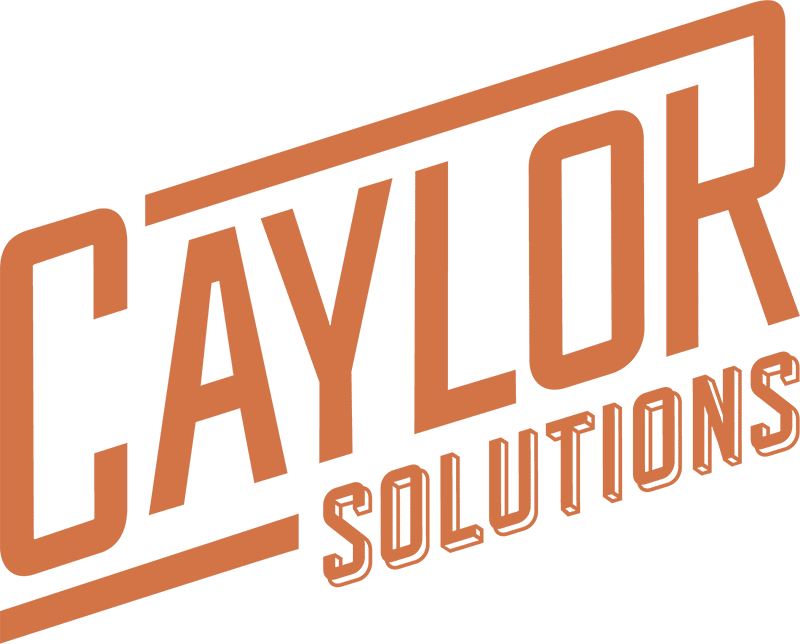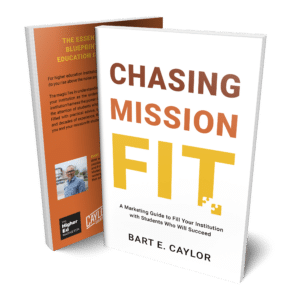With the massive challenges in higher education, marketers can only thrive by navigating change in technology with emotional intelligence.
Higher education tends to move slowly, and with everything around us evolving quickly, we need to approach change as a team.
Going it solo into the future of technology and AI simply isn’t an option.
You and I must bring our colleagues, and even our leaders, along for the ride in order to make it work.

One-on-one conversations and mutual understanding are at the forefront of Susan’s roadmap to administrative success.
In this post, I want to highlight many of the points she shared with us in navigating change in technology as a team.
Throughout our conversation, we covered numerous topics such as influencing higher ed leadership, managing change, and integrating AI technology. Let’s dive in.
Influencing Higher Ed Leadership
Navigating change in technology starts at the human level with influencing the leaders within our institutions to see the opportunities of the shifting landscape.
Susan highlighted an essential element in the art of persuasion within institutional frameworks—knowing who you’re engaging with and tailoring your approach accordingly.
I think about four different areas:
- Who am I engaging with?
- What and why am I having the conversation?
- What kind of information do I need to convey? And…
- How am I going to impact the conversation to move my agenda or an office’s agenda, department’s agenda forward?
[It’s about] engaging the leadership [to] provide comprehensive and successful conversations.
We get many different perspectives. We have a much more thorough conversation, which leads to better outcomes.
It’s crucial to begin by identifying exactly who the leaders are, and how you’re going to tailor your approach to help them understand the challenges and the possibilities.
Most marketers didn’t get into their jobs thinking about how much they would need to understand and leverage the multifaceted layers of leadership to enact meaningful change.
But if we want to see real change, we’ve got to do a better job of leading up, as leadership guru John Maxwell puts it.
Navigating Change in Technology with Finesse
Change is inevitable, especially in an era where the only constant is the relentless pace of technological advancements.
Susan points out that readiness for change is gauged through “lots of conversations and lots of preliminary conversations.”
It’s not just about the what and the when; it’s profoundly about the how.
Preparing for resistance and working through it by building trust and relationship equity is key.
I had a trustee say to me, “I don’t see any billboards for my college, but I see them for everybody else.” I said, “Yes, but we are in a different market.”
We’re talking to students who are so technologically advanced that they expect us to be that way. There is a generation gap or two, maybe two or three gaps between generations, between that trustee, president, VP level, and your students and parents.
And so educating [leadership] on why it’s important to use technology that speaks to a student or a parent or other cohort you’re talking to is really important.
Success in higher ed marketing, as well as in all of life, begins with relationships.
Through relationships, you’ll be able to gauge exactly what is important to your leadership.
You have to remember that what is important to you has to also be important to the leadership of the institution—[because] it’s not always the same!
You have to support [what’s important to your leaders] and provide ideas and reasons why somebody else [should] support your idea.
Embracing AI Without Losing the Human Touch
Our conversation with Susan naturally veered into the realm of artificial intelligence—a domain fraught with both excitement and apprehension.
Susan articulated a balanced perspective, emphasizing that “Technology can really do a lot of the grunt work… but we also [have to find] the places where a person is better suited for the task.”
For many higher ed marketers, this should be a reassuring conversation because as Susan puts it, “People interaction is not dead. It’s not gone, and it will never go away. And we do need it.”
It’s a reminder that while AI can revolutionize how we operate, the human element remains irreplaceable, especially in building relationships and providing a personalized educational journey.
Leveraging AI to Enhance Human Connections
Reflecting on the potential of AI, we reflected briefly on the early days of automation and its promise to free up time for more human-centric tasks.
At first, most of us were just thinking about getting more of our time back so that we could do more work!
However, Susan’s words resonated deeply with me:
“If you use these automated tools… that frees you up to do more of the things that computers cannot do, which is relationships.”
It underscores a future where technology and humanity are not at odds but are complementary forces enriching the educational experience.
Meeting Student Needs with Sensitivity and Innovation
Our discussion on navigating change in technology wouldn’t have been complete without addressing the evolving needs of students in this digital age.
Susan’s anecdote about her grandson navigating TikTok with ease was a powerful illustration of the generational shift in technology use and expectations.
That’s the thing about understanding student needs and really understanding how they like to be connected to you. There [isn’t just] one way that works!
[You need to use] technology simultaneously while developing personal relationships with students. We’re trying to keep up with them.
Students are so advanced [in their adoption of technology]. My two-year-old grandson got on TikTok yesterday. Think about that.
He got the phone, and he figured out TikTok somehow! I was astonished. It’s amazing.
This brief story, which I’m sure we’ve all seen in our personal lives, highlights the urgency for higher education institutions to not just keep up but anticipate and innovatively meet these changing needs.
Navigating Change in Technology Will Take Emotional Intelligence
Our conversation with Susan Kassab underscored a critical message for higher education professionals…
The journey through technological advancements and changing landscapes is not just about adaptation but about leading with emotional intelligence, understanding, and an unwavering focus on the human element at the heart of education.
Remember, as we’re navigating change in technology, the goal isn’t merely to survive but to thrive by fostering an environment where technology enhances our ability to connect, understand, and educate.
It’s about creating a future where institutions can not only meet the current demands but anticipate and innovate for the needs of tomorrow.
Discover more when you listen to the podcast!
Like all of our blog post reviews of The Higher Ed Marketer podcasts, there’s so much more to learn in the podcasts themselves.
Listen to our interview with Susan Kassab to get even more insights into:
- Influencing influential leadership (2:56)
- How leadership should approach change (10:31)
- When is the right time to use AI (24:45)
- Balancing student needs with AI technology (31:39)
Chasing Mission Fit
A Marketing Guide To Fill Your Institution With Students Who Will Succeed.
The essential marketing book every higher education institution needs! If you are a higher education marketing professional seeking a fail-safe plan to make your institution stand out, “Chasing Mission Fit” is your guide.
-
- Precisely target your ideal student
- Craft a compelling brand for your institution
- Implement a proven marketing strategy from 30 years of expertise
So you can empower your institution with audience-focused marketing strategies, and attract mission-fit students who will flourish in your unique academic environment.
Ready to transform your institution’s marketing approach?
Order now!
Featured image by Anela Ramba/peopleimages.com via Adobe Stock













